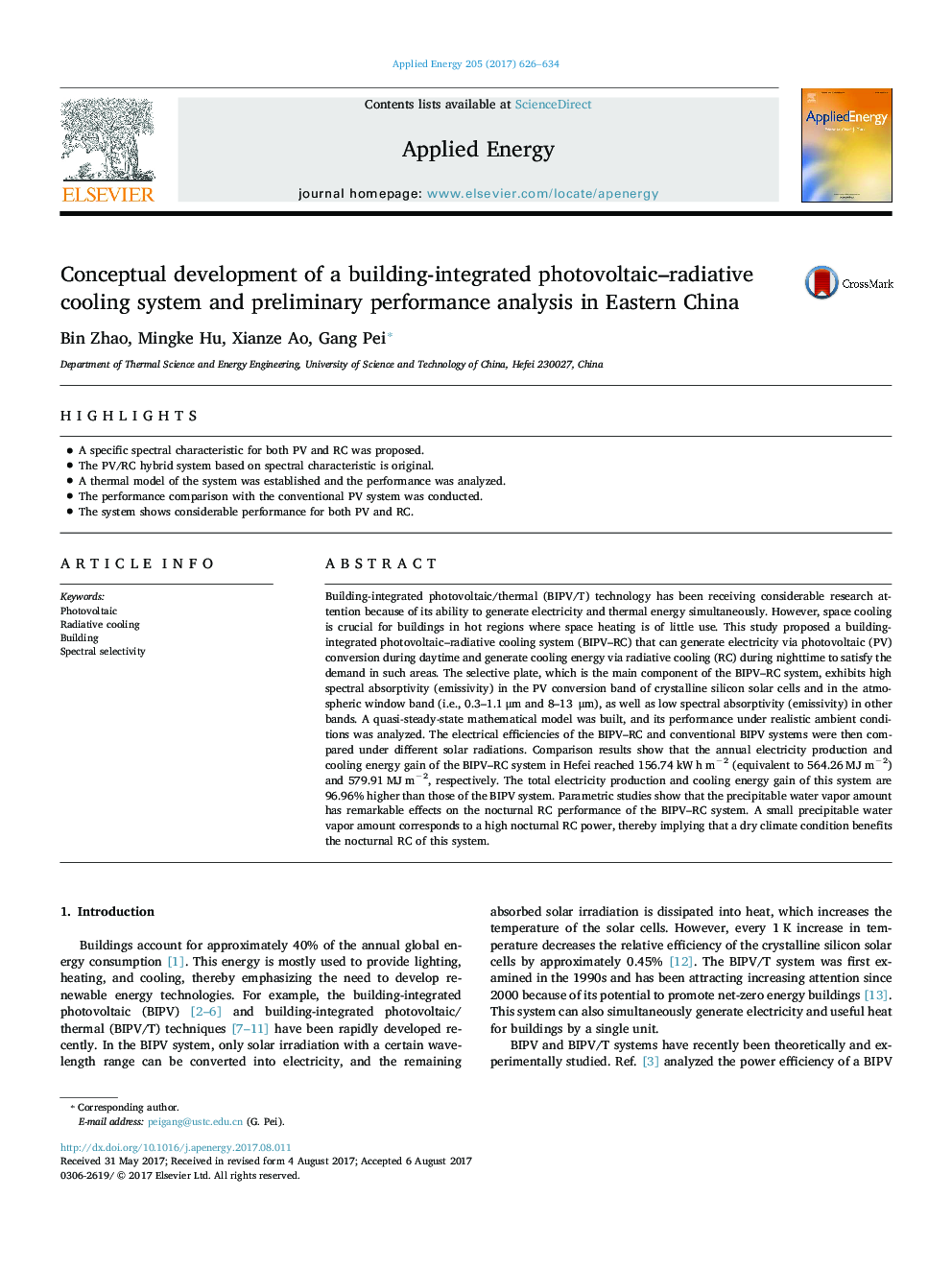| کد مقاله | کد نشریه | سال انتشار | مقاله انگلیسی | نسخه تمام متن |
|---|---|---|---|---|
| 4915873 | 1428085 | 2017 | 9 صفحه PDF | دانلود رایگان |
عنوان انگلیسی مقاله ISI
Conceptual development of a building-integrated photovoltaic-radiative cooling system and preliminary performance analysis in Eastern China
ترجمه فارسی عنوان
توسعه مفهومی یک سیستم خنک کننده فتوولتائیک - شعاعی ساختمان و تجزیه و تحلیل عملکرد اولیه در شرق چین
دانلود مقاله + سفارش ترجمه
دانلود مقاله ISI انگلیسی
رایگان برای ایرانیان
کلمات کلیدی
فتوولتائیک، خنک کننده شعاعی، ساختمان، انتخابی طیفی،
موضوعات مرتبط
مهندسی و علوم پایه
مهندسی انرژی
مهندسی انرژی و فناوری های برق
چکیده انگلیسی
Building-integrated photovoltaic/thermal (BIPV/T) technology has been receiving considerable research attention because of its ability to generate electricity and thermal energy simultaneously. However, space cooling is crucial for buildings in hot regions where space heating is of little use. This study proposed a building-integrated photovoltaic-radiative cooling system (BIPV-RC) that can generate electricity via photovoltaic (PV) conversion during daytime and generate cooling energy via radiative cooling (RC) during nighttime to satisfy the demand in such areas. The selective plate, which is the main component of the BIPV-RC system, exhibits high spectral absorptivity (emissivity) in the PV conversion band of crystalline silicon solar cells and in the atmospheric window band (i.e., 0.3-1.1 μm and 8-13  μm), as well as low spectral absorptivity (emissivity) in other bands. A quasi-steady-state mathematical model was built, and its performance under realistic ambient conditions was analyzed. The electrical efficiencies of the BIPV-RC and conventional BIPV systems were then compared under different solar radiations. Comparison results show that the annual electricity production and cooling energy gain of the BIPV-RC system in Hefei reached 156.74 kW h mâ2 (equivalent to 564.26 MJ mâ2) and 579.91 MJ mâ2, respectively. The total electricity production and cooling energy gain of this system are 96.96% higher than those of the BIPV system. Parametric studies show that the precipitable water vapor amount has remarkable effects on the nocturnal RC performance of the BIPV-RC system. A small precipitable water vapor amount corresponds to a high nocturnal RC power, thereby implying that a dry climate condition benefits the nocturnal RC of this system.
ناشر
Database: Elsevier - ScienceDirect (ساینس دایرکت)
Journal: Applied Energy - Volume 205, 1 November 2017, Pages 626-634
Journal: Applied Energy - Volume 205, 1 November 2017, Pages 626-634
نویسندگان
Bin Zhao, Mingke Hu, Xianze Ao, Gang Pei,
